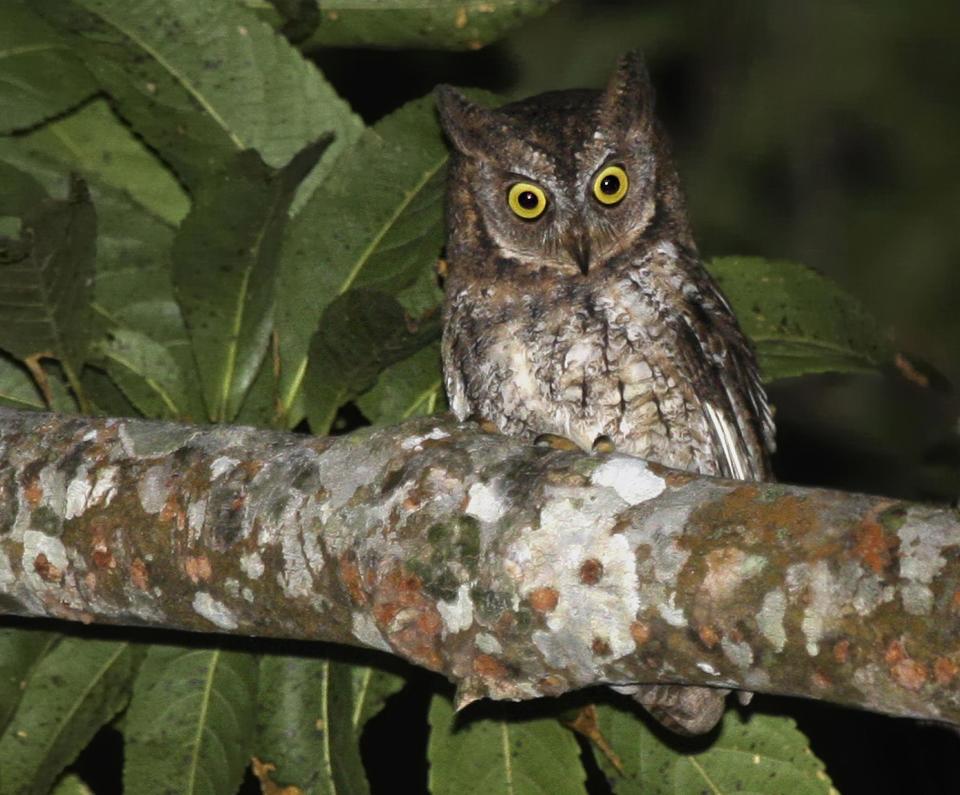Brown-and-white Indonesian owl called new species
JAKARTA, Indonesia (AP) — Researchers looking for a nocturnal bird in Indonesia accidentally identified a new species of owl — one that has a distinct song and is believed to exist nowhere else in the world.
The Rinjani Scops owl was first identified in 2003 and has since been spotted only on Lombok island, about 25 kilometers (15 miles) from the popular resort island of Bali. The findings were published Wednesday in the online journal PLOS ONE.
The small owl, with brown and white feathers and big golden eyes, had been confused with a similar-looking species for more than a century. But scientists from Sweden and the U.S., who were visiting the island doing separate research on another nocturnal bird, both recorded the Rinjani Scops owl's vocalizations. They noticed that its whistled note was entirely different from other songs, including that of the widespread Moluccan Scops owl, or Otus magicus.
"I am surprised that the true identity of this bird has remained hidden from the scientific world for so long," George Sangster, lead author from the Swedish Museum of Natural History, said in an email. "The Rihnjani Scops owl is quite common and can be found on various parts of the island. It is also very vocal, so it is hard to miss."
He said the discovery was not published for 10 years due to the work needed to verify the finding.
The researchers reviewed all previous work and museum specimens dating to 1896. They found a report mentioning the Rinjani Scops owl's tone, which differs from the barking cry of the Moluccan Scops owl. However, plumage, size and shape were primarily used to identify species until the late 1970s when vocalizations were added. Lombok also remained less visited by bird researchers than other parts of Indonesia, which may explain why it took longer for the Rinjani Scops owl to be identified.
"Now that there is a beautiful owl known only from this island, we hope that more bird watchers will visit Lombok," Sangster said. "Ornithologists have long patted themselves on the back, believing that the taxonomy of birds is 'almost complete.' With each new discovery, this becomes less credible. It underscores that even after 150 years of scientific study we still do not know all the birds in the Indo-Malayan region."
More fieldwork was conducted to determine that the Rinjani Scops owl — named Otus jolandae after Sangster's wife who first discovered the species with him — was not found elsewhere. However, Sangster said more investigation is need to completely rule out the bird's existence in extreme western Sumbawa, a neighboring island.
The owl has long been known by Indonesian bird experts, but they too believed it was part of the more widespread species.
"We are proud of this new discovery as it has added another endemic species in Indonesia," said Yoppy Hidayanto, coordinator of Burung Indonesia, a bird conservation group in Bogor, West Java. "There are still so many things that could be explored about birds in Indonesia."
The new owl's English name comes from Mount Rinjani, Indonesia's second-highest volcano, located on Lombok.


